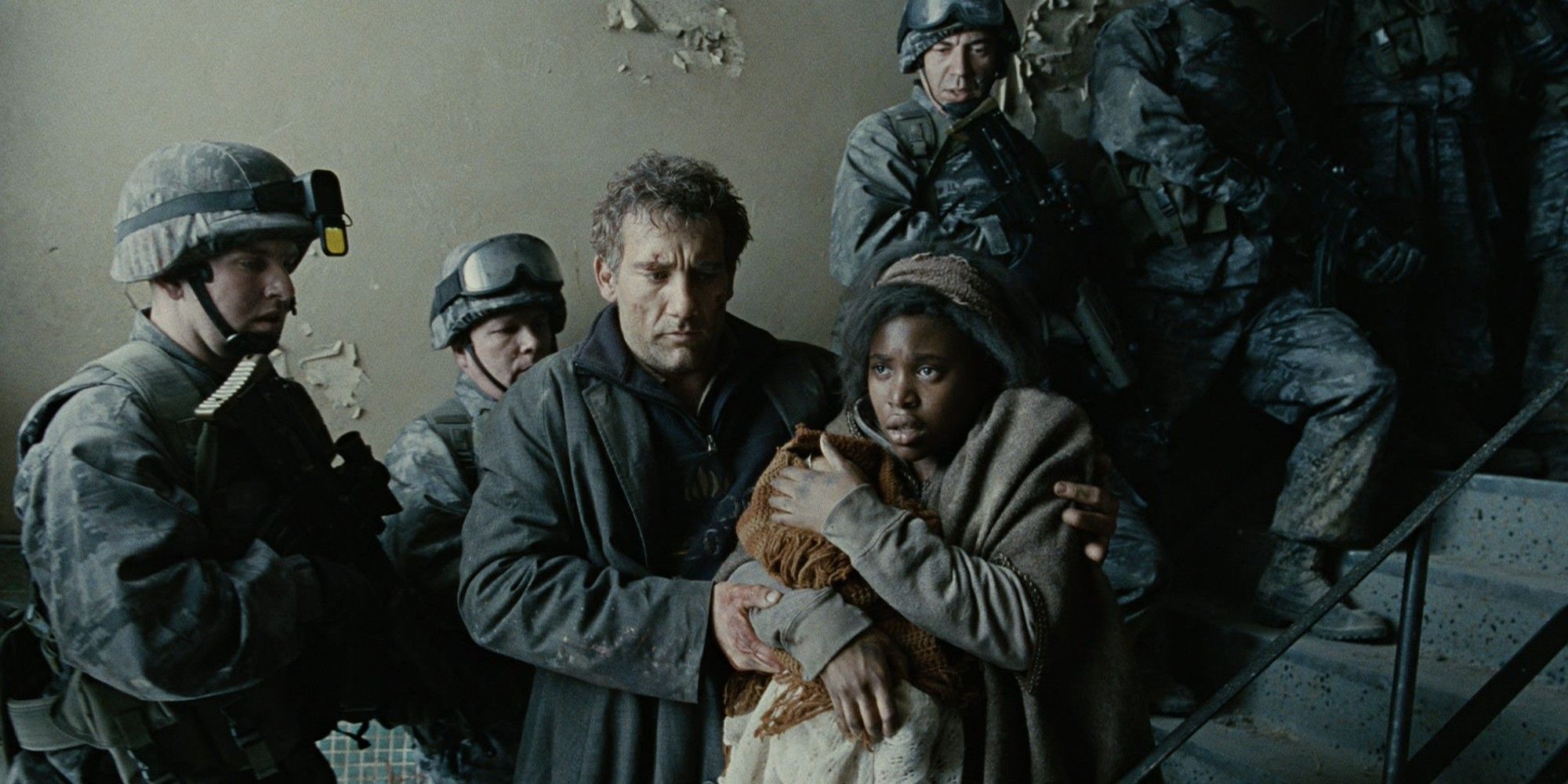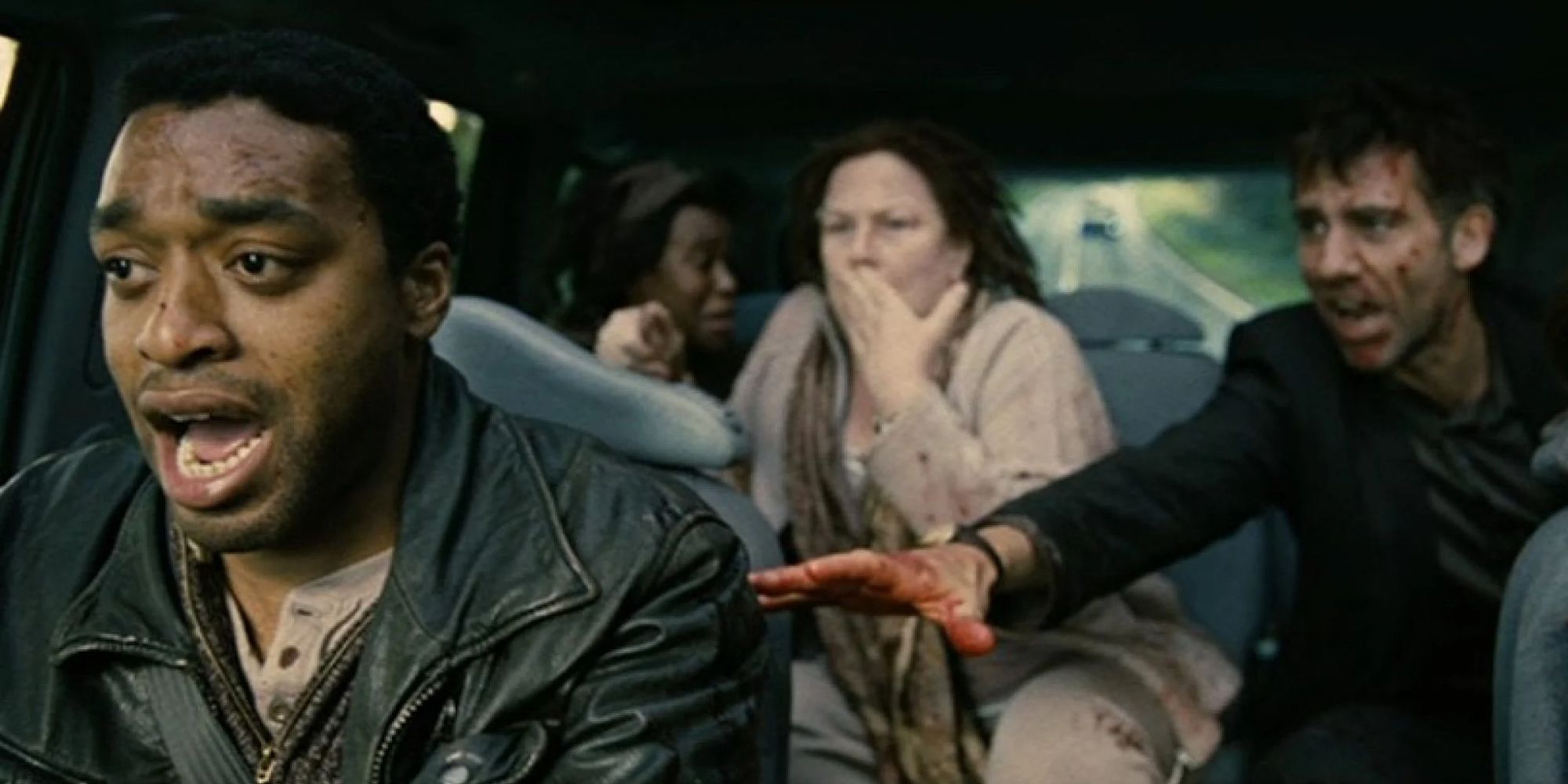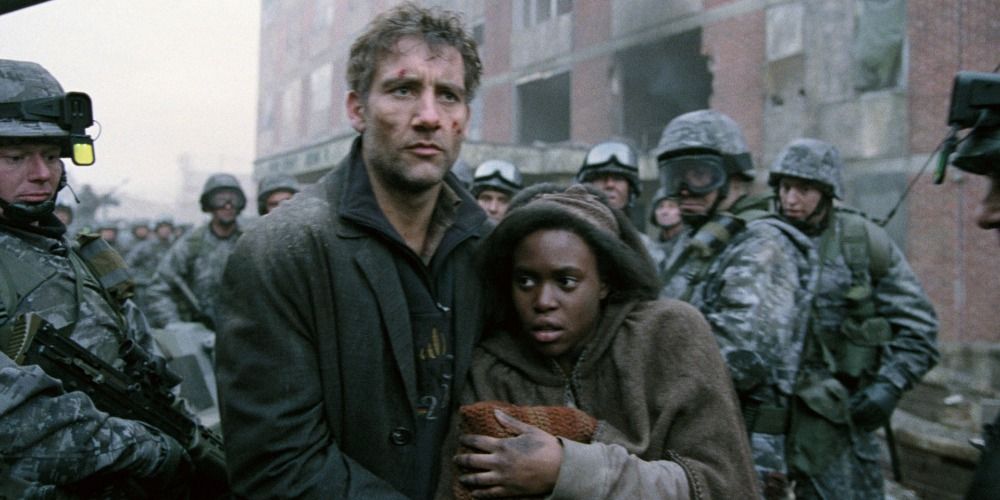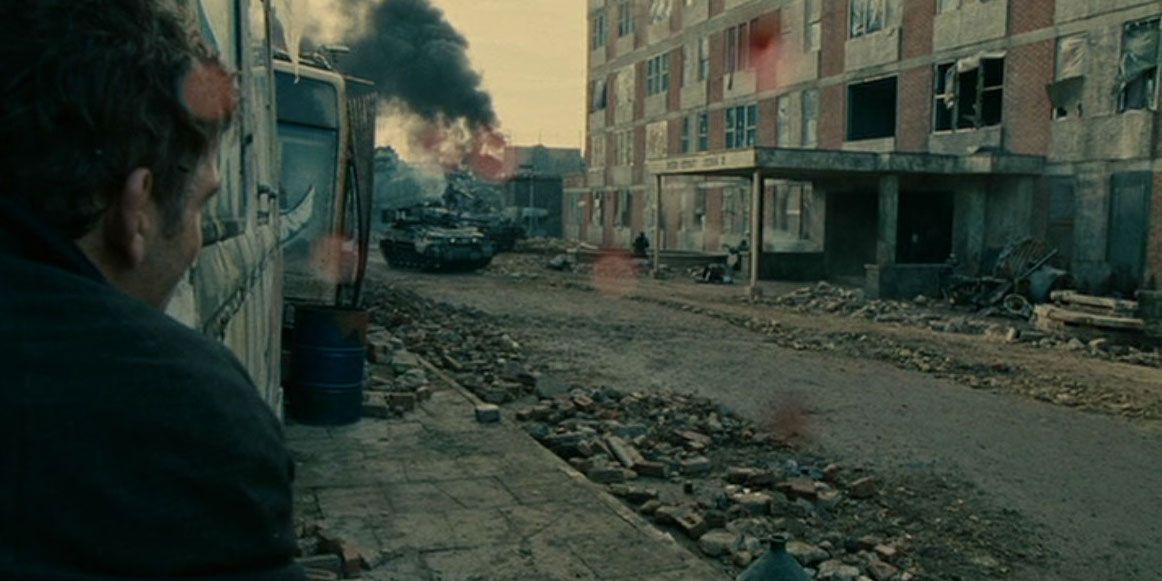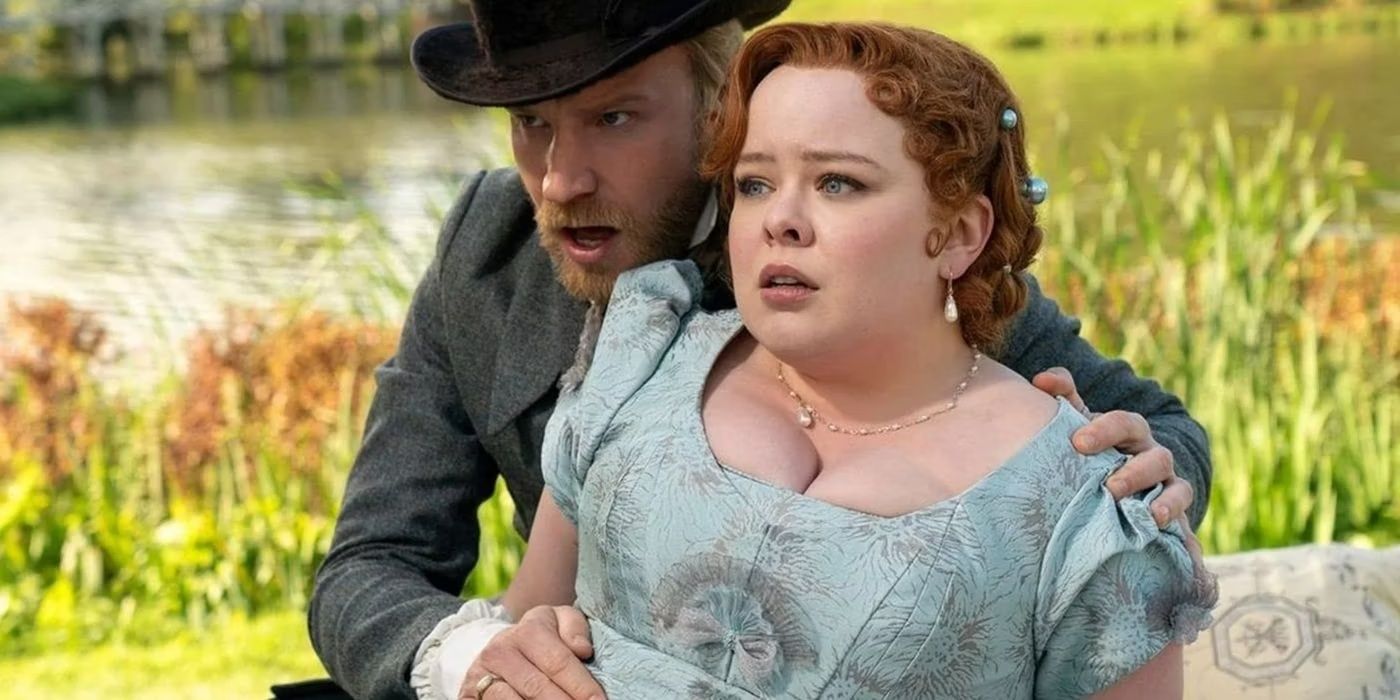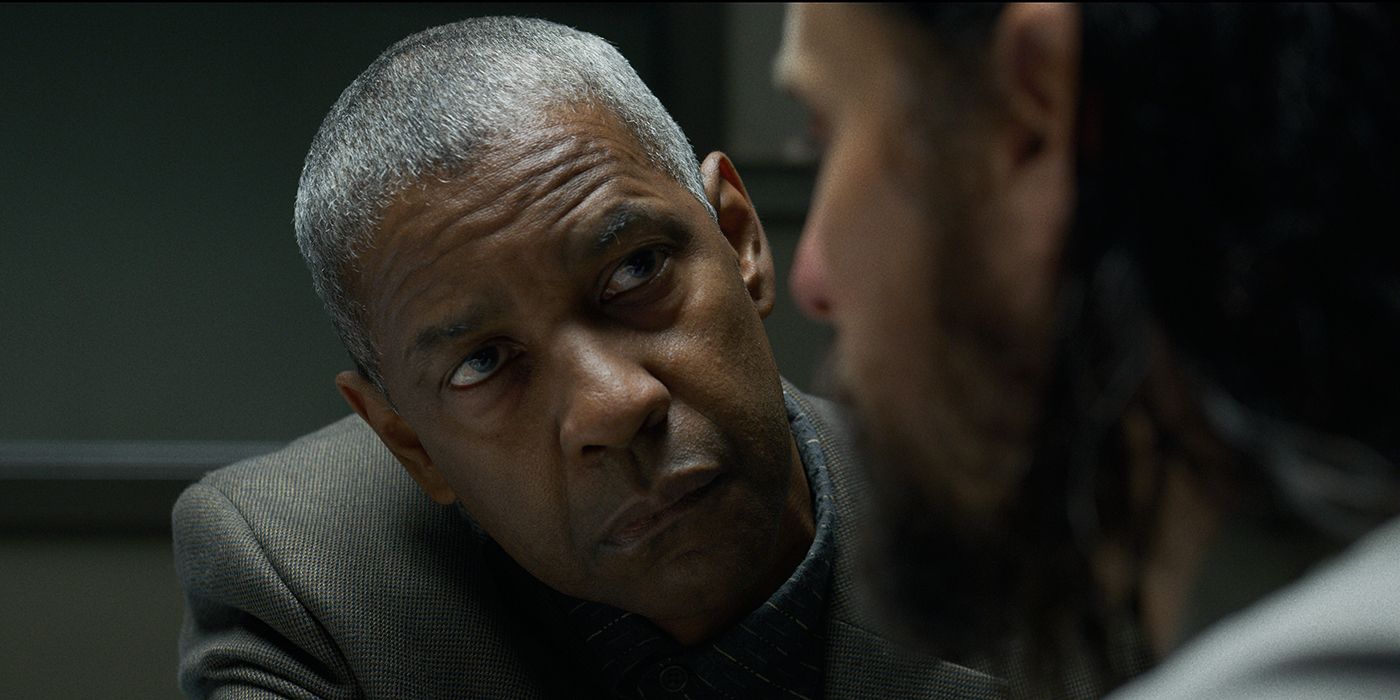The Big Picture
- Director Alfonso Cuarón uses long takes in ‘Children of Men’ to immerse viewers in a bleak, violent future, depicting a realistic version of a dystopian hellscape without glamorizing the violence.
- Long takes are used to build tension in the film, with scenes like the ambush and the murder of a key character employing jarring and expert cinematography to create an intense viewing experience.
- The blood splatter on the camera lens during the war zone scene was an accident, but it adds a personal and immersive element to the film, staining the audience’s view of the on-screen world and making them personally affected by the violence.
Director Alfonso Cuarón is an acclaimed filmmaker with an ever-evolving use of the long take, a sequence when the camera doesn’t stop filming as if the action is happening in real time. In his 2018 film Roma, for example, Cuarón captures the life of 1970s Mexico City with several long takes: the camera can patiently follow Cleo (Yalitza Aparicio) walk through the busy, vibrant streets or bear witness when Cleo desperately struggles to help the kids she cares for out of a strong ocean current. Cuarón doesn’t bring too much attention to the technique, rather relying on what’s playing out in the scene to hold the viewer’s interest. While Roma shows off Cuarón’s knack for long takes, years prior in 2006, he and frequent collaborator, cinematographer Emmanuel Lubezki, teamed up for Children of Men to yield stunning results where they used long takes to pull you into a dystopian future. During the making of the movie’s finale, filming setbacks, a hectic schedule, and an on-camera mistake almost derailed everything, but instead provided an iconic scene and one of the movie’s most memorable moments.
In ‘Children of Men,’ Director Alfonso Cuarón Shows a Bleak, Violent Future
Based on the 1992 dystopian novel by P. D. James, Children of Men opens in the year 2027 with humanity dealing with two decades of infertility. The United Kingdom has become a police state where immigrants are dehumanized, whether through imprisonment or execution. Ex-activist Theo (Clive Owen) finds little purpose in life until he’s reunited with his estranged wife, Julian (Julianne Moore). Julian is the leader of the Fishes, a militant group standing for immigrant rights with a clandestine goal in mind to help the future. She needs Theo to escort a young refugee, Kee (Clare-Hope Ashitey), and a large sum of money is what catches Theo’s attention. Once he tags along, the journey becomes dangerous because what Julian initially leaves out is that Kee is pregnant —an anomaly in this world. With this information, the mission gets clearer. Theo must guide Kee to the site of the Human Project, a secretive, nearly mythic group aiming to cure global infertility.
While Children of Men is a bleak look at the human population when it has fallen into war, hatred, and distrust, it’s also filmed beautifully, with a great eye for style to turn the story into an immersive experience. Alfonso Cuarón and Emmanuel Lubezki wanted to depict a realistic version of a near future reduced to a gloomy hellscape. However, it was just as important for them to not glamorize the on-screen violence, so while the action sequences are thrilling and memorable, there is a documentary-like style to it. This is crystal clear during a critical shift in the plot when Theo suffers a personal loss.
Long Takes Are Used to Build Tension in ‘Children of Men’
About thirty minutes into Children of Men, Theo and Julian perform a ping pong ball trick for their vehicle of passengers including Kee, fellow Fishes member Luke (Chiwetel Ejiofor), and former midwife, Miriam (Pam Ferris). The scene plays out in a relaxing long take, and Theo and Julian’s playfulness fools you into letting your guard down. Big mistake —that’s when the ambush happens. An armed gang rolls a flaming car down to block the road, jump-starting a rush by Theo and the others to drive out of the havoc. All in the frenetic unforgettable long take, the camera pans to the left and the right as the approaching enemy rushes from all sides. Julian is hit by a bullet directly to her throat, spraying blood all over her fellow passengers and thus killing off a key character plus a well-known actress in a split second. Theo has little time to grieve though, realizing that his pregnant passenger is endangered by staying behind with the Fishes, and soon learning that they were the ones that conspired to take out Julian and have Luke replace her as their leader. Stuck as a guardian, Theo ushers Kee to a safe place.
As with Julian’s death, Cuarón and Lubezki’s efforts to not sensationalize the violence are evident again in what soon happens to another one of Theo’s allies, the eccentric, pot-smoking, Jasper (Michael Caine). Around the time Children of Men was released, Michael Caine was in the middle of playing one of his most well-known modern characters, Alfred Pennyworth in Christopher Nolan‘s Batman series. Jasper is not as prim and proper as dear Alfred, and according to an interview that Cuarón did with Vulture, Caine’s performance as Jasper was actually inspired by musician and peace activist, John Lennon. The character finds any moment in life to make a joke, which is why it hurts when this harmless man is later assassinated by Luke. In this scene, the camera is distant from where Jasper is held at gunpoint. Theo (and the audience) are helpless to watch the ensuing murder from on top of a hill. While both Julian and Jasper’s death scenes employ jarring and expert uses of cinematography, the most powerful visual in the movie comes in the finale and actually happened accidentally during filming. As the movie reached its highest level of escalation, behind the camera, there was plenty of stress, too.
Alfonso Cuarón and Emmanuel Lubezki Use Long Takes To Immerse You in the World of ‘Children of Men’
At a refugee camp, Theo finds himself in the middle of a war zone. The Fishes have captured Kee and intend to thwart the mission of the Human Project, but Theo’s determination to see his task to the end knows no bounds. He hurries to find Kee, who has since delivered her baby, racing across the crumbled buildings and abandoned vehicles that litter the location all while dodging the bombardment of the British military and Fishes. Underneath the noise of explosions and gunfire plays “Threnody to the Victims of Hiroshima” by Krzysztof Penderecki, which is extremely unsettling when paired with the human casualties of the aimless war. It’s an eerie orchestral composition that Children of Men plays to disconcert the audience, before finding another way to immerse you into the battlefield.
When Theo hides in a derelict bus that has been turned into a shelter, he finds no safety when gunfire pelts against the side of the vehicle, smashing away the glass that remains of the windows. One of the bullets hits a refugee as Theo passes by, the man’s blood splattering onto the camera lens and remaining there as Theo attempts to head into an apartment building where Kee is. As the camera follows, he leaves the shadows from within the bus to dash out into the overcast day, the blood spots on the camera lens glowing brightly in the light. It can be easily believed that this blood splatter was intentional, given the hard work put into choreographing the multiple long takes in Children of Men. However, while the red residue helped to make sure that the carnage of this battle wasn’t easily forgotten, the blood stains were completely by accident.
The Blood Splatter on the Lens in ‘Children of Men’ Was an Accident
Filming for the war zone scene in Children of Men took fourteen days to capture everything that was needed. For a film shoot, any amount of time in the schedule is usually never enough, like with this scene, when by the twelfth day nothing had been filmed. With time-consuming rehearsals and limited takes eating up the necessary time, the crew was pressured with a countdown. In his interview with Vulture, Cuarón talked about the difficulties of the long take and staging the scene, especially in having only two days left before the crew lost the location. He said that they had the morning of the thirteenth day, but “then you have to reset the explosions, the screams, the whole thing. [It then takes] five hours to reset. So you only have another shot right before the light goes away.” The esteemed director then talked about an error that forced the afternoon take to be stopped, meaning a loss of daylight, and pushing filming to be resumed the following morning —the final day they had scheduled.
Camera operator George Richardson fell over with the equipment during the morning take, meaning there was one chance left for the scene to be filmed correctly in the afternoon. Cuarón explained, “When we arrived at the bus, the camera goes in, and blood splatters the lens. With my little monitor, I see that I cannot see anything. I yell, ‘Cut!’ But an explosion happens at the same time, so nobody hears me. And that gives me time to think, ‘Look, I have to roll to the end.’ So we kept on going.'” While he first thought of the blood splatter as a mistake, Emmanuel Lubezki was overjoyed and called it a “miracle.” Although Cuarón initially felt deflated, Lubezki got his friend to see that the mishap proved to be a lucky one which helped the final result.
The audacious finale to Children of Men caps off a movie that is packed with breathtaking long takes, throwing you into a world that is breaking apart from any semblance of the good of humanity, leaving only corruption. The blood that hits the camera lens is a way for the movie’s audience to be personally affected by the violence, unable to wash it away and staining our view of the on-screen world as if we are as active as Theo himself on his quest to save Kee. This unforgettable sequence, like the other long takes in the movie, is a spectacular use of filmmaking. Even more impressive, however, is how the blood stain is a stunning, cinematic touch that wouldn’t have occurred if Alfonso Cuarón’s voice was louder than an explosion.

